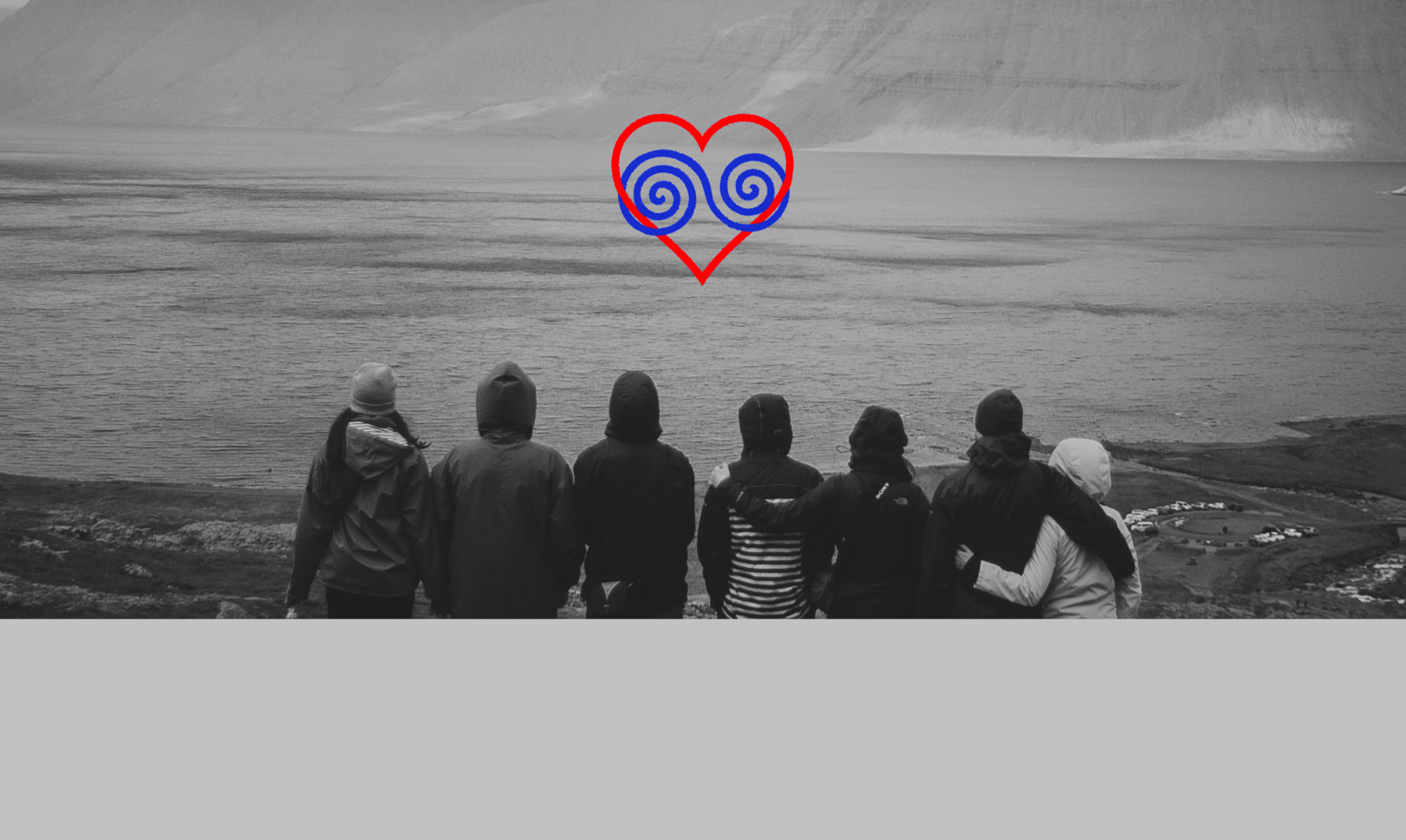Disarmament

»Emotional armor is not easy to shed, nor should it be.
It has formed for a reason: as a requirement for certain responsibilities, as a conditioned response to real circumstances, as a defense against unbearable feelings.
It has served an essential purpose. It has saved lifes.
Yet it can be softened over time. It can melt into tenderness at its core. It can reveal the light at its source.
But never rush it, never push up against it, never demand it to drop its guard before its time.
Because it knows something you don’t:
In a still frightening world armor is no less valid than vulnerability.
Let it shed at its own unique pace.«
These thoughts were shared by the Canadian author and film-maker Jeff Brown in his book “Spiritual Graffiti” (Enrealment Press) in 2015.
I believe that there is a great deal of truth in these words – and I also believe that almost all people who are in some kind of ethical multiple relationship right now can somehow recognize themselves in them.
I write this today in my continued conviction and recognition of the fact that probably no relationship type truly confronts people with their inner-soul potentials as intensely as multiple relationships are capable of doing.
At this point, I must first insert a kind of – how do they say nowadays? – “disclaimer”: I certainly consider dyadic¹ models – and especially the best-known model of mono-amory², the ” one-on-one relationship” – to be basically suitable and very well able to guarantee this in the same way. However, as I have already tried to illustrate in Entry 9 by means of the “car metaphor”, I am quite sure, based on my life experience, that this standard model – due to the often also very standard acknowledgement (or rather: non-acknowledgement) of the pending general terms and conditions applicable to the respective “occupants” – usually tends to avoid an all too intensive consideration of the particular sensitivities of the reciprocal inner states [by which, as it is well known, the explosive power often becomes particularly volatile in the event of a crisis…].
This “safety margin” (which is rather a kind of “ignorance buffer”), does not exist in multiple relationships from the first moment of being established.
Because there are no patterns, no blueprints, on the basis of which the potential participants could simply make a copy of something that already exists or has been experienced. Every step into the relationship – yes, even just the creation of a multiple relationship – is rather challenging and always new.
Somehow a strange thing. A multiple relationship develops (or expands)… This is, after all, for the time beeing, a moment of great joy – which is often equally greeted and cheered by people belonging to a positively minded environment with appropriate congratulations and enthusiasm.
Accordingly, the participants themselves (hopefully) experience this great joy as well. But besides the obstacle course that any non-normative occurrence has to overcome in an otherwise still largely normative world (“Polyamory? Is that something like cheating with permission…?” /“Did you even think about the children…?”), the real challenge for the participants themselves will sooner rather than later be the encounter with their own “emotional armour”.
This is a matter that is seldom brought out in the open. Since on the one hand, those involved in multiple relationships are regularly already under great pressure to justify and to prove themselves (“I knew it from he beginning: Polyamory CAN’T work…!”). Furthermore, the more practical issues frequently dominate and need to be dealt with first and foremost (“On Tuesdays? On Tuesday this week I have yoga until 5 p.m. and then I have to pick up the kids – we’ll have to postpone our joint meeting unless…”). And last but not least, the topic mentioned at the top of this article is extraordinarily personal.
Multiple relationships are based on core values such as openness, transparency and honesty. And to reconcile more than one person and their schedules and needs – and goddess forbid if there are probably more than two! – flexibility is needed as well as “ambiguity tolerance” (explained in Entry 62).
But the word “armor” alone suggests that our openness and flexibility may not be as forthcoming as we would admit to ourselves (or even to others) over a cup of coffee. Even our tolerance is limited by the firm seat of our armor – after all, it was once formed in order to endure the excessive demands of external influences arbitrarily imposed on us by others – but not in order to gain an understanding of them, since that would not have helped or protected us at that time.
But now finally “off into a real multiple relationship”. When this time comes, for many of us a long-cherished wish may come true – and for some, even the admission of this subliminally long-standing wish may be midwife as well as witness to this event. And some of us ” are struck ” simply out of the blue and a new world emerges in us, which may not have been born until these new people arrived, because it was only through this meeting that this world was born…³
Whatever the case. On this bLog – as being highlighted by my Oligoamory – I formulate multiple relationships as a synthesis of intimate loving relationships and community building. To this end, I hereby promote the model of self-chosen “kin” (family of choice) as companions with whom we wish to share our lives (esp. Entry 5, Entry 34, Entry 55). In essence, therefore I am concerned with nothing less than establishing jointly our self-created “home”, wherein each person can also be “at home” within him*herself.
However, in his book “Hearticulations” (Enrealment Press 2020), Jeff Brown adds:
»You can’t run away from home. Because you bring it with you everywhere you go.
There can definitely be value in escaping to another geography – but you will still have to go back down the path and reclaim your childhood. Because it s still alive in you, still dictating your relational patterns, still controling your choices.
It must be owned. It must be confronted. It must be healed.
And until it is, it’s still the place you live.«
My childhood? The place where I still live? How could that be true?
In the US science fiction television series “Deep Space 9“ from 1993, there is a highly interesting sequence in the debut episode:
In his first adventure, one of the protagonists of the series encounters a species of alien beings who live eternally and therefore do not know the factor “time” as an ever-progressing phenomenon – for them, everything that is, exists in a perpetual state of oneness. For an understanding with the otherworldly beings this is unfavourable at first. Because from their point of view, the aliens perceive the protagonist as erratic, self-centred and unpredictable, since they do not understand that his actions are due to his linear existence “in time”. Nevertheless, the protagonist finally succeeds in establishing communication: He explains to the alien beings that we humans are subjected to exactly this linear existence by our biology of being born and death – which in particular also affects our acting, thinking and planning. To illustrate this, he chooses the analogy of a game, which is subject to fixed rules, but where the exact course of events cannot be predetermined. As a contrast to the alien beings, who seem somewhat rigid and rather passive in their “eternalness”, the protagonist explains the curiosity and flexibility of the humans precisely by their linear nature: Because the “course of the game” is not fixed, surprise, curiosity and agility towards what might come are thus typical characteristics of our species.
The extraterrestrials are able to understand this explanation quite well, although the concept is, of course, very much in contrast to their own kind of existence. Then they suddenly discover something astonishing in the psyche of our protagonist – and immediately they confront him with that scene, which they promptly put before his eyes: He himself, in a burning spacecraft that is falling apart, unable to pull his dying wife out from under a contorted steel girder. Our protagonist is horrified and says that this is a terrible incident of his past and that he wants to get away from it immediately. The aliens, on the other hand, are puzzled and ask him why he would still exist there so much on an emotional level. At this moment, the protagonist realizes that, at least in our minds, there are places that are “non-linear”, frozen time, trauma-places of vulnerability and exposure from which we have not yet been able to break free.
It is precisely these “places of vulnerability and exposure” that Jeff Brown is referring to when he says that we “still” live there. Unredeemed soul places that continue to influence our present intentions and relationship dynamics with their forces of disregard, loneliness, powerlessness, helplessness, humiliation and even violence. Are still able to take influence – because in some way they have not yet terminated inside of us.
Unfortunately, however, also places that because of the choices we have made (or not made – but, strictly speaking, these are choices, too) we still consider to be “our home”.
Third-party-induced disregard, loneliness, powerlessness, helplessness, humiliation and violence of the past therefore still “live” inside us today – and thus, strictly speaking, they are already waiting for those people whom we will foreseeably invite into our lives, into “our world”.
Which will be the point at which multiple relationships can become a severe distortion of the “more than the sum of its parts” I otherwise so eagerly propagate on this bLog – far more dramatic than any mere couple relationship of just two people.
Especially when we enter into multiple relationships out of an unconscious desire not to be alone “at home” any longer with those other unpleasant “room-mates” of our past. Already in Entry 58 I caution against using other people for personal gaps in one’s need-fulfilment in order to increase the degree of one’s own well-being by means of such a stunt.
In fact, this way, it will be much more likely to confirm the old Polyamory axiom: “Want more drama? Add more people!”.
In order to clean up our own house we need – as I wrote in numerous Entries – awareness, the willingness to look closely and above all a lot of courage. At best, other people may be able to support us in this, but the work itself remains entirely and nonetheless ours alone.
Today, as I myself am on the verge of a new beginning in terms of multiple relationships (again), I probably can’t present you, my dear readers, with a redeeming punch line.
However, I wanted to share with you in this article the wisdom in the words of Jeff Brown, as his opening remark holds for me an important key in this matter: Specifically, the acknowledgement of the existence of our armor and the recognition of the respective nature and origin of that armor.
Because we did not put on the aforementioned armor (and we know this very well in our hearts) out of arrogance, vanity or self-aggrandizement. So, therefore, our loved ones have also not done this accordingly with theirs.
Consequently, in our (multiple) relationships we will always encounter each other in a certain degree of still existing “armament”, because a part of our world, of “our home” – in the words of Master Brown – is still sufficiently “frightening” to us. In fact, the beginning of a multiple relationship itself may even include or add quite a bit of “fright” on top of that – depending on the nature of our own unredeemed moments of inner vulnerability and exposure.
Hence, pressure, rushed action or expectations are the worst approaches here in any case.
But what gives us hope for disarmament?
I think this is our love. Or, if you prefer, one size smaller at the beginning of a relationship: our infatuation.
Because somewhere there, at this beginning, there must have been that moment when our counterpart – even if only for a small moment – showed him*herself vulnerable, lowered shield and armor, so that we were able to perceive the “light at its source”.
And it was exactly this light that attracted us, fascinated us; the light in which we could already recognize the affection and connection of our souls for a brief moment.
If the writer Henry David Thoreau is right that “love must be both a light and a flame”, then it will be that same flame that shall melt the core of our armor into gentleness.
Let us therefore allow ourselves and each other time for redemption.
At our own unique pace.
¹ dyadic = referring to a system of two units (which also consists exclusively of those two units).
² On this bLog I use mono-amory/monoamory as a deliberately opposite phrase to the term “Polyamory“. Since “Polyamory” is composed of ancient Greek πολύ poly “many” and Latin amor “love” and therefore denotes “many loves” or “loving many”, “monoamory” (composed of ancient Greek μόνος monos “one/single” and Latin amor “love”) stands for the love towards only one other person. For example, one manifestation of mono-amory is marriage = monogamy.
³ And thanks again to Anaïs Nin (diaries 1929–1931) for this wonderful quote!
Thanks to 4317940 on pixabay.com for the photo!

